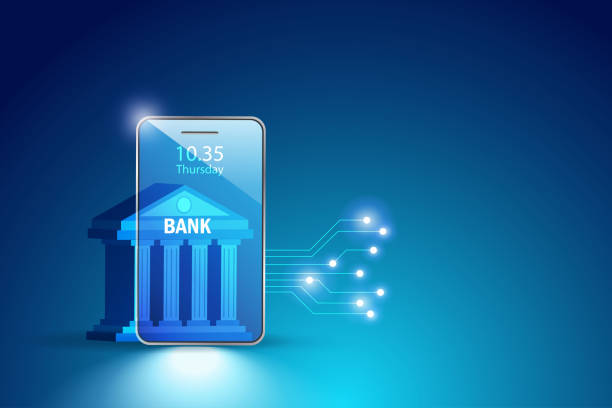Digital banking represents a transformative shift in the financial services industry, driven by technological advancements and changing consumer expectations. It involves the integration of digital technologies into banking operations and customer interactions, offering more convenient, efficient, and personalized financial services. This article explores the concept of digital banking, its benefits, key technologies, trends, challenges, and the future outlook of the industry.

Understanding Digital Banking
Digital banking refers to the use of digital technologies to provide banking services and manage financial transactions. It encompasses a wide range of online and mobile banking activities, including account management, payments, loans, investments, and customer support. Digital banking leverages technology to enhance the efficiency and accessibility of financial services, moving beyond traditional brick-and-mortar banking.
Key Components of Digital Banking:
- Online Banking: Accessing and managing banking services through web-based platforms, including checking account balances, transferring funds, and paying bills.
- Mobile Banking: Using mobile apps to perform banking activities, such as checking account information, depositing checks, and making payments.
- Digital Wallets: Storing payment information and making transactions through digital wallets or mobile payment apps.
- Fintech Solutions: Integrating financial technology (fintech) innovations, such as robo-advisors, peer-to-peer lending, and cryptocurrency services.
Benefits of Digital Banking
- Convenience and Accessibility:
- 24/7 Access: Digital banking provides round-the-clock access to banking services, allowing customers to perform transactions and manage accounts anytime and anywhere.
- Global Reach: Customers can access their accounts and conduct transactions from anywhere in the world, breaking down geographical barriers.
- Enhanced Customer Experience:
- Personalization: Digital banking platforms use data analytics to offer personalized financial recommendations, products, and services based on customer preferences and behavior.
- Seamless Transactions: The digital experience streamlines transactions, reducing the need for in-person visits and minimizing wait times.

- Cost Efficiency:
- Reduced Operational Costs: Digital banking reduces the need for physical branches, leading to cost savings on infrastructure, staffing, and paper-based processes.
- Automated Processes: Automation of routine tasks, such as transaction processing and customer service inquiries, enhances operational efficiency.
- Innovative Financial Products:
- New Offerings: Digital banking enables the development of innovative financial products and services, such as digital-only accounts, mobile payment solutions, and integrated financial planning tools.
- Collaboration with Fintechs: Banks can collaborate with fintech startups to offer cutting-edge solutions and expand their service offerings.
- Improved Security:
- Advanced Encryption: Digital banking employs advanced encryption and security measures to protect sensitive financial data and prevent unauthorized access.
- Fraud Detection: Sophisticated algorithms and machine learning technologies enhance fraud detection and prevention, reducing the risk of financial crimes.
Key Technologies Driving Digital Banking
- Artificial Intelligence (AI):
- Chatbots and Virtual Assistants: AI-powered chatbots and virtual assistants provide automated customer support, answering queries, and assisting with transactions.
- Fraud Detection: AI algorithms analyze transaction patterns and detect anomalies to identify and prevent fraudulent activities.
- Blockchain Technology:
- Secure Transactions: Blockchain technology ensures secure and transparent transactions through decentralized ledgers, reducing the risk of tampering and fraud.
- Smart Contracts: Smart contracts automate and execute financial agreements based on predefined conditions, enhancing efficiency and accuracy.
- Big Data Analytics:
- Customer Insights: Big data analytics provides valuable insights into customer behavior, preferences, and financial trends, enabling personalized product offerings and targeted marketing.
- Risk Management: Data analytics helps banks assess and manage risks by analyzing historical data and predicting potential financial challenges.
- Cloud Computing:
- Scalability: Cloud computing enables banks to scale their digital services and infrastructure based on demand, ensuring flexibility and cost-effectiveness.
- Data Storage: Cloud-based solutions provide secure and scalable data storage options, enhancing accessibility and data management.
- Biometric Authentication:
- Enhanced Security: Biometric authentication methods, such as fingerprint scanning and facial recognition, provide an additional layer of security for accessing accounts and authorizing transactions.
- Convenience: Biometric authentication offers a convenient and user-friendly alternative to traditional passwords and PINs.

Trends in Digital Banking
- Rise of Neobanks:
- Digital-Only Banks: Neobanks, or digital-only banks, operate without physical branches and offer a fully digital banking experience. They focus on providing user-friendly interfaces, low fees, and innovative features.
- Fintech Integration: Neobanks often collaborate with fintech companies to offer specialized financial services and integrate with other digital platforms.
- Growth of Mobile Payments:
- Contactless Payments: Mobile payment solutions, including digital wallets and contactless payment options, are gaining popularity due to their convenience and security.
- Peer-to-Peer Payments: Peer-to-peer (P2P) payment apps allow users to transfer money to friends and family easily, without the need for traditional banking intermediaries.
- Personalized Financial Services:
- Customized Recommendations: Digital banking platforms use data-driven insights to offer personalized financial advice, product recommendations, and tailored financial planning tools.
- Behavioral Analytics: Banks analyze customer behavior to provide relevant offers and services, enhancing the overall customer experience.
- Integration with Emerging Technologies:
- IoT Integration: The Internet of Things (IoT) is enabling new financial services and interactions, such as smart home payments and connected car financing.
- Robo-Advisors: Robo-advisors provide automated investment management and financial planning services, leveraging algorithms and AI to optimize investment portfolios.
- Focus on Financial Inclusion:
- Access to Banking Services: Digital banking initiatives are aimed at increasing financial inclusion by providing access to banking services for underserved and unbanked populations.
- Innovative Solutions: Banks and fintech companies are developing solutions to address barriers to financial inclusion, such as low-cost digital accounts and microloans.
Challenges of Digital Banking
- Cybersecurity Risks:
- Data Breaches: The increased reliance on digital platforms exposes banks to cybersecurity risks, including data breaches and hacking attempts.
- Phishing and Fraud: Digital banking customers may be targeted by phishing scams and fraudulent schemes, requiring robust security measures and user education.
- Regulatory Compliance:
- Compliance Requirements: Banks must navigate complex regulatory frameworks related to data privacy, anti-money laundering (AML), and know your customer (KYC) requirements.
- Regulatory Changes: Rapidly evolving regulations may impact digital banking practices and require ongoing adjustments to ensure compliance.
- Technology Integration:
- Legacy Systems: Integrating new digital technologies with existing legacy systems can be challenging and may require significant investment and resources.
- Interoperability: Ensuring compatibility and interoperability between different digital platforms and services is essential for seamless customer experiences.
- Customer Adoption:
- Digital Literacy: Some customers may have limited digital literacy or resistance to adopting new technologies, impacting the uptake of digital banking services.
- User Experience: Banks must prioritize user-friendly design and functionality to encourage adoption and ensure a positive customer experience.
- Operational Challenges:
- System Downtime: Digital banking platforms may experience technical issues or system downtime, affecting the availability and reliability of services.
- Customer Support: Providing effective customer support for digital banking inquiries and issues requires adequate resources and responsive service channels.
The Future of Digital Banking
- Enhanced Personalization:
- AI and Machine Learning: The use of AI and machine learning will further enhance personalization, enabling more accurate and relevant financial recommendations and services.
- Predictive Analytics: Predictive analytics will help banks anticipate customer needs and provide proactive solutions and offers.
- Blockchain and Decentralized Finance (DeFi):
- Blockchain Integration: Blockchain technology will continue to drive innovation in digital banking, including secure transactions, smart contracts, and decentralized finance solutions.
- DeFi Expansion: Decentralized finance (DeFi) platforms will offer alternative financial services, such as lending and borrowing, outside traditional banking systems.
- Integration of Emerging Technologies:
- 5G Connectivity: The rollout of 5G technology will enable faster and more reliable digital banking services, supporting real-time transactions and enhanced mobile experiences.
- Augmented Reality (AR): AR technologies may be used to create immersive and interactive banking experiences, including virtual branch visits and financial planning tools.
- Focus on Financial Well-being:
- Holistic Financial Planning: Digital banking platforms will increasingly offer comprehensive financial planning tools and resources to support customers’ overall financial well-being.
- Health and Wealth Integration: Integration of health and wealth management services will provide a holistic approach to managing both financial and personal health.
- Sustainability and Ethical Banking:
- Green Banking: Digital banking will support sustainability initiatives, including eco-friendly practices and investments in green projects.
- Ethical Banking: There will be a growing emphasis on ethical banking practices, including transparency, social responsibility, and responsible lending.
Conclusion
Digital banking is reshaping the financial services industry, offering enhanced convenience, efficiency, and personalization for customers. By integrating digital technologies and embracing innovation, banks can provide a more seamless and responsive banking experience. However, the journey of digital transformation also presents challenges, including cybersecurity risks, regulatory compliance, and customer adoption. As technology continues to evolve, digital banking will play a crucial role in driving the future of financial services, enabling new opportunities and addressing emerging needs in the digital age.

